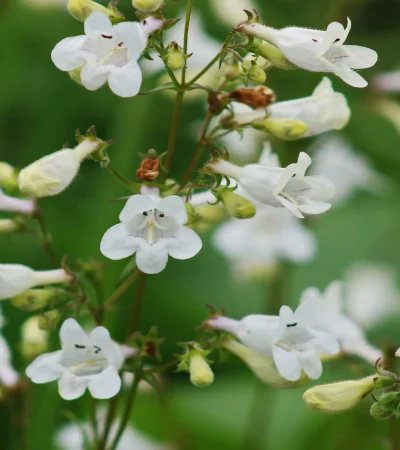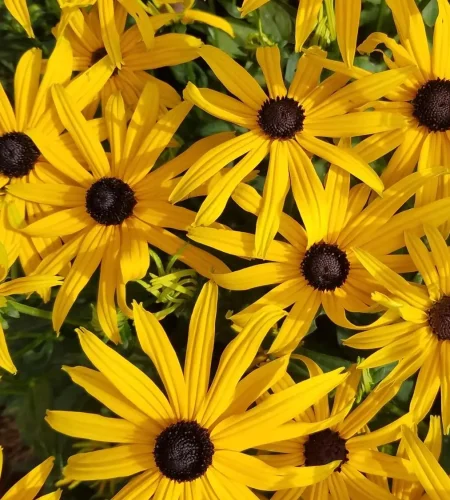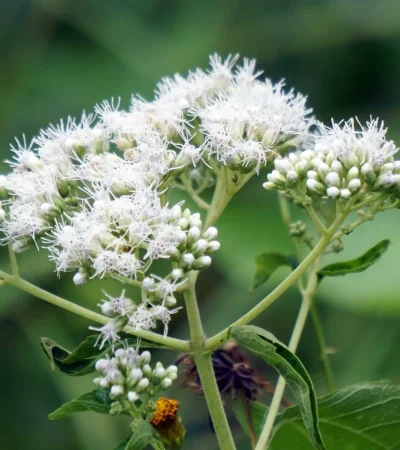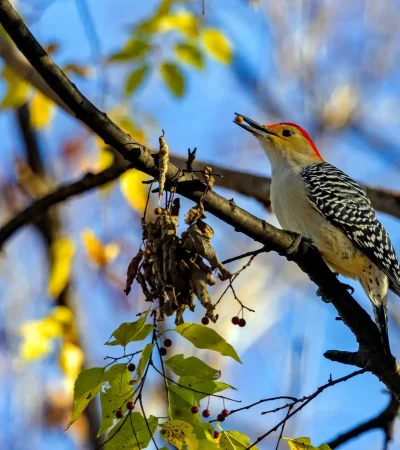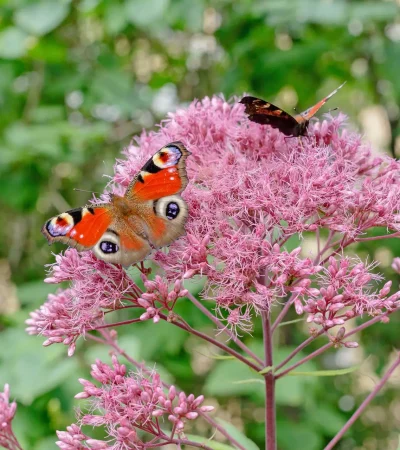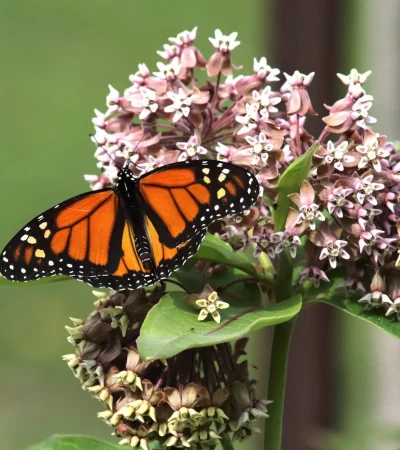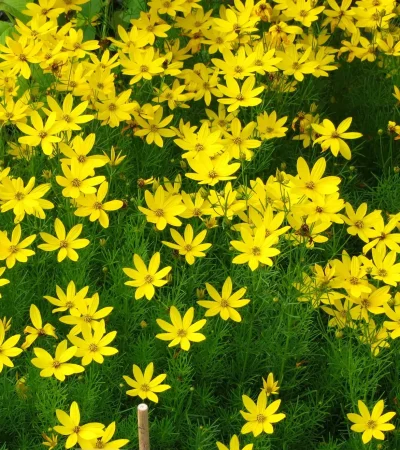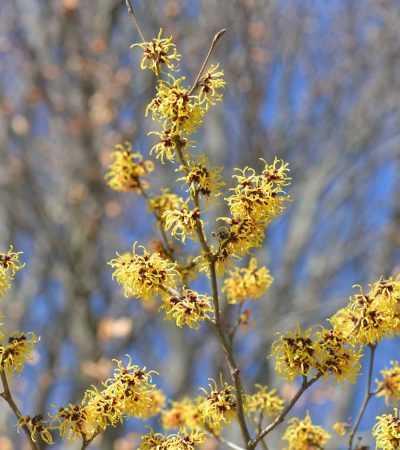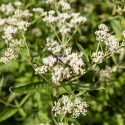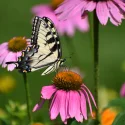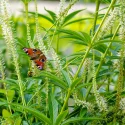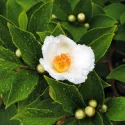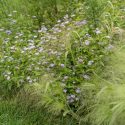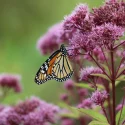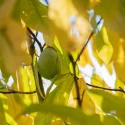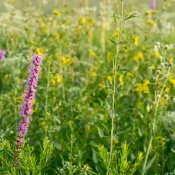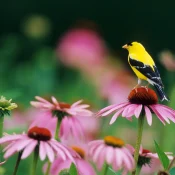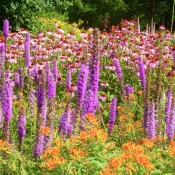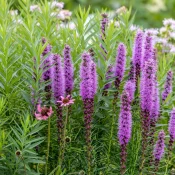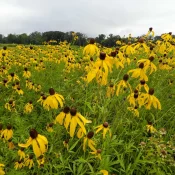Why do some native plants have such bad names?
Some native plants have absolutely horrible, offputting common names. Names like tickseed (seen above) and milkweed make some of the most gorgeous (and important) native plants sound better suited for the compost bin. Blame the generations before for giving these gorgeous flowers bad names! Here are some easy-to-grow native plants whose common names should be ignored and instead planted immediately.
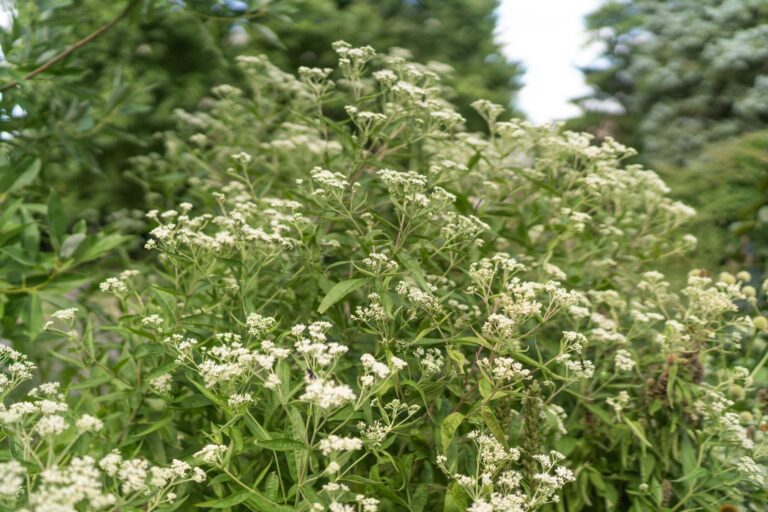
First off, what is a native plant?
A native plant is a flower, shrub, or tree that has grown in an area for thousands of years. Native plants are beautiful, powerful choices for our yards and parks.
Native plants know the weather, soil, and temperament of their home regions better than any plant from elsewhere. Within native plants’ DNA, they hold the strength and resiliency to thrive throughout the droughts, cold snaps, heat waves, and rainstorms found in their home area. On top of this, native plants are what pollinators and birds rely on to survive.
Because of their resiliency, beauty, and wildlife support, native plants are always the best choice for our gardens and parks. (Especially compared to lawns.)
Even though native plants are beautiful…
Some native plants have terrible names
No matter how valuable, beautiful, or resilient native plants are—some native plants have simply awful common names.
These names might make you wince when you see the tag at the nursery—but fear not! Overlook their offputting common name and enjoy their beauty. Here are some gorgeous native wonders whose common names should be overlooked (or changed immediately!):
Where did these terrible names come from?
Since native plants have been here for millennia, they have been named by the generations before. The names given to plants by the generations long before are called common names.
A single plant can have many common names, each variation specific to a region or cultural story. A good example is Bee Balm: it also goes by the common names Monarda, Oswego Tea, and Bergamot.
Confusion over multiple common names was one of the reasons why singular Latin names for plants were created. Plants may have many common names, but only one Latin name (Here’s a quick overview of Latin plant naming.)
Meet the beautiful native flowers with awful common names
Here are some important, resilient, gorgeous native plants whose common names should be overlooked:
Beardtongue
This might be the worst name on the list. Who wants anything called a Beardtongue in their yard?!
Blame the bad copywriters in generations before for focusing on a tiny feature of this plant—minuscule hairs on its stamen—for naming inspiration. You may need a magnifying glass to see what this plant is named for.
These plants are also sometimes called penstemons, which is their Latin genus name. With 280+ species to pick from, there is a Beardtongue (or penstemon) for everyone in North America.
New common name recommendation:
American Snapdragon
Black-Eyed Susan
What a bummer of a common name—Who is Susan and why does she have black eyes?! What can we do to help her?!
It turns out this native plant’s common name comes from a weepy, hetero-normative European poem from hundreds of years ago. Today, it sounds like a Law and Order episode. Which is a true disservice to an electric yellow flower that blooms for over a month during the hottest summer months. Susan isn’t recovering from black eyes—she is more of a ninja superhero badass.
New common name recommendation:
Resilient Susan
Boneset
In today’s world, the name can seem macabre and Halloweeny. In the early European colonists’ world, the name was a shorthand for a plant believed to help cure fevers so bad, they hurt your bones. We have modern medicine for that need now, but pollinators need this flower urgently for end of season flowers.
New common name recommendation:
Nectar Clouds
Hackberry
No one wants to be called a hack, so why are we calling this plant a taunting name?
Similar to witch-hazel, “Hackberry” comes from the old Scottish word “Hagberry” which means “bird cherry.” Which is exactly what this tree SHOULD be called! Bird Cherry is the perfect name for this beautiful tree, which blooms in the spring, has tiny cherries in the summer (edible to humans, too), and is the host plant for FOUR butterflies.
New common name recommendation:
Bird Cherry Tree
Joe Pye Weed
This common name is one of the most confusing. Who is Joe Pye? And why should I plant a weed?
The story of Joe Pye is an amazing saga of Native American resilience (with a guest appearance by George Washington.) It’s well worth reading and it’s well worth planting, to celebrate both the strength of this Mohican leader and the ability of this plant to offer pollinators needed food towards the end of the season.
New common name recommendation:
Joe Shauquethqueat Flower
Mohican Flower
Milkweed
One poorly named plant is milkweed (who wants to plant a lactose weed?!)
Milkweed deserves better marketing. Milkweed gets its name from its milky white sap and is crucial for monarch butterflies’ survival. Milkweed is the only plant that monarch caterpillars eat. Without this gorgeous native plant, there would be no monarch butterflies.
Milkweed species are native to all of the continental United States. Plant some immediately! (Also, it’s time to dig up any Butterfly Bushes.)
New common name recommendation:
Monarch Milkflower
Tickseed
Let’s start with the obvious: Tickseed does NOT attract ticks.
Instead, its common name comes from the shape of its seeds, which do indeed look like tiny ticks. Why our ancestors decided to focus on something so small instead of celebrating its sunny, bright flowers is a mystery. Perhaps because of this, nurseries have shifted to sometimes calling it by its genus name: Coreopsis. Which is a mouthful!
New common name recommendation:
Tiny Sunnies
Witch-hazel
This plant has nothing to do with witches and it does not make hazelnuts. Its name comes from the Anglo-Saxon word wych, which means bent branch.
Witch-hazel branches were used by early European colonists to find water via divining; a bent branch supposedly signified underground water and helped place wells. ‘Hazel’ comes from the similarities of this plant’s leaves to actual Hazelnut trees (to which there’s no relation.) No matter what you call it, native species of this shrub flower during the late fall or early winter, giving bursts of color during drab times.
New common name recommendation:
Winter-hazel or Fall-hazel (depending on when the species blooms)
Wow, those were some terrible common names, right? But now you know where they came from, and to ignore them when you plant. Common names come from the generations before, but that doesn’t mean we can’t add our own to the naming mix.
Let’s recognize these gorgeous native plants for their resiliency and beauty, and give them new names to help introduce them to future generations. Can’t wait to see our gardens filled with Mohican Flower, Tiny Sunnies, and Monarch Milkflower for years to come.
There are some lovely common names…
Thankfully, there were some gardener poets in the past. Common names like American Beautyberry, Blazing Star, Firebush, Passionflower, and Redbud are beautiful names for beautiful plants.
We hope you had fun romping through some history while meeting some beautiful native plants. Common names are pieces of history and storytelling that tell us a little (or a lot!) about the way generations before thought of our native plants.
Thankfully, common names are everchanging. Let’s hope some of these offputting common names get replaced in our lifetimes. Marketing can do wonders (Example: Orange Roughy fish used to be called Slimehead!)
Wondering what else to plant? Here are some quick regional guides to help get you inspired:
Or, explore our thematic planting guides!
